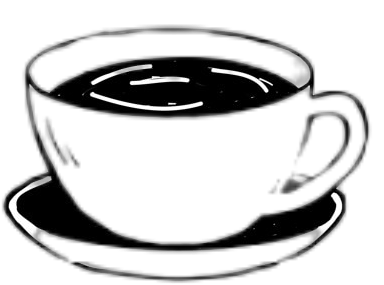#1 Philips 3200
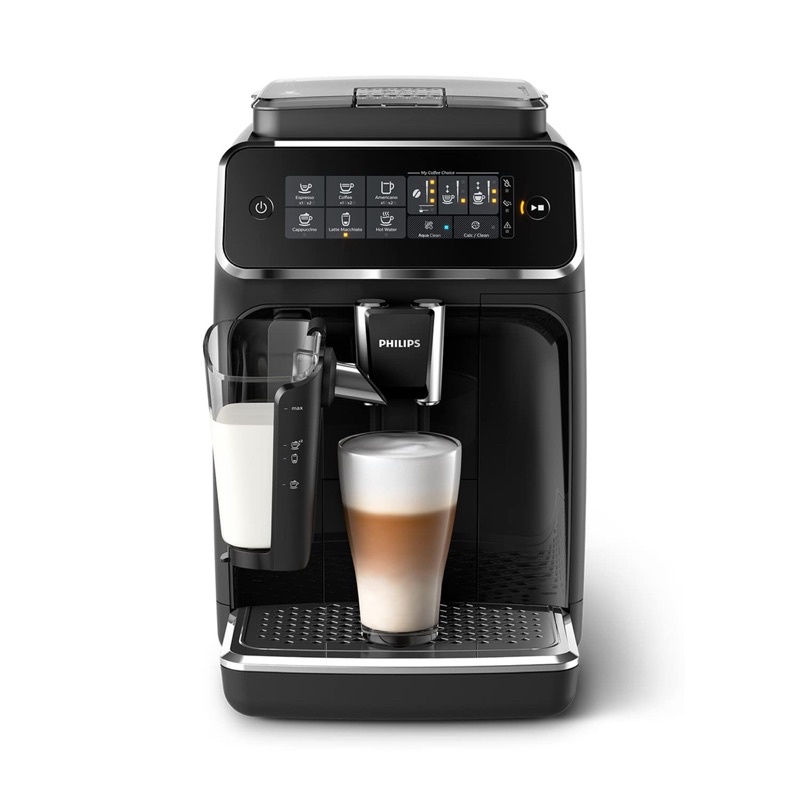
- Easy to use and navigate
- Affordable
- Compact design
#2 Philips 4300
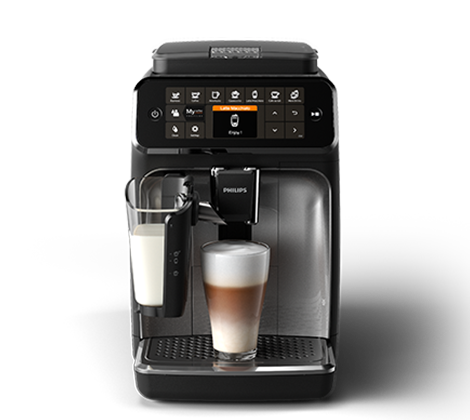
- Wide variety of drinks
- Intuitive touchscreen
- Compact with milk frothe
#3 Philips 5400

- Wide variety of drinks
- Advanced customization
- User profiles
As a coffee enthusiast, I often find myself exploring various coffee machines that promise to deliver the perfect cup of coffee. Recently, I’ve delved into the world of Philips espresso machines, specifically comparing the Philips 3200, 4300, and 5400 models. After thorough research and personal experience, I’m excited to share my insights on these three machines and ultimately highlight why I believe the Philips 3200 stands out as the best option among them.
The allure of espresso machines lies in their promise of barista-quality coffee right in the comfort of your home. Having experimented with various models over the years, I approached this comparison with a discerning eye. I wanted to see if these models could meet my needs for both daily caffeine fixes and occasional gatherings with friends.
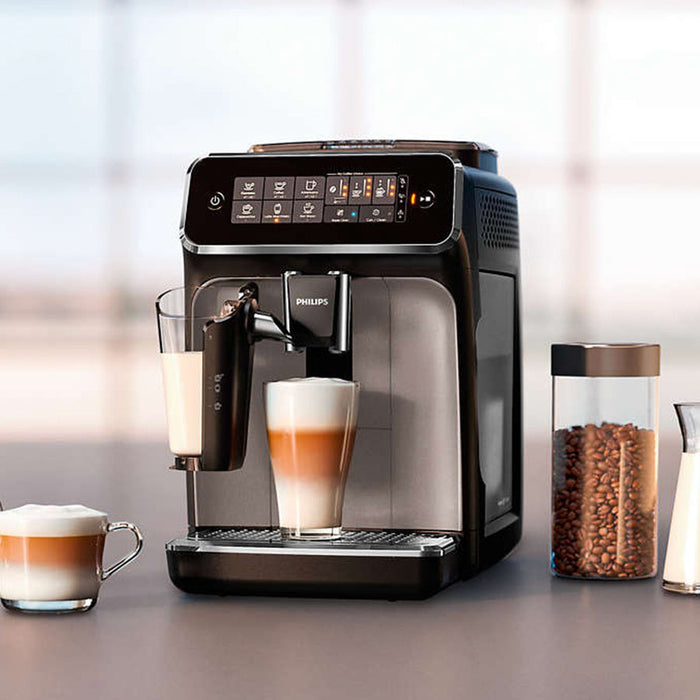
Understanding the Philips 3200 vs 4300 vs 5400
When it comes to espresso machines, Philips has developed a reputation for producing reliable and high-quality machines that cater to different preferences and budgets. Each of these models comes with its unique features, and understanding these differences can significantly influence your purchasing decision.
The Philips 3200, 4300, and 5400 each have their strengths, but they also vary in capabilities, ease of use, and features. My exploration into these machines was driven by the desire to find a machine that not only meets my coffee needs but also enhances my coffee-making experience.
The Features of the Philips 3200
Let’s start by examining the Philips 3200. This model is a fantastic entry-level super-automatic espresso machine that boasts an impressive range of features. One of the standout features of the 3200 is its intuitive touchscreen interface, making it user-friendly and easy to navigate.
The Philips 3200 also offers a variety of coffee options, including espresso, coffee, cappuccino, and latte macchiato. The machine comes with a built-in milk frother, which allows you to create creamy, frothy milk for your beverages effortlessly. The 3200's brewing system is designed to extract optimal flavors from the coffee beans, resulting in a rich and aromatic cup of coffee.
Another feature that I appreciate is the machine's ease of maintenance. The Philips 3200 includes a removable brew group and an automatic cleaning function, which simplifies the cleaning process. This is an essential aspect for anyone who values convenience and doesn’t want to spend too much time on upkeep.
My Personal Experience with the Philips 3200
Using the Philips 3200 has been a refreshing experience for me. One of my favorite aspects is how quickly I can brew a cup. Mornings can be hectic, and having a machine that prepares my coffee in a matter of minutes is invaluable. I simply fill the bean hopper with my preferred coffee beans, set my desired brew strength on the touchscreen, and let the machine do its magic.
The milk frother is also worth mentioning. I initially thought that I might struggle with frothing milk, but the Philips 3200 made it incredibly simple. I fill the frother with milk, select my drink type, and the machine does the rest. The texture of the milk is consistently creamy, which elevates my homemade lattes and cappuccinos.
Comparing with the Philips 4300
Moving on to the Philips 4300, it is crucial to see how it stacks up against the 3200. The 4300 has similar features, including the touchscreen interface and various coffee options. However, it adds a few enhancements that may appeal to certain users.
One of the key differences is the Philips 4300’s improved milk frothing system. While the 3200 does an excellent job, the 4300 offers a more advanced milk frother that provides a creamier texture and better control over the milk temperature. This could be a deciding factor for those who prioritize milk-based beverages.
Moreover, the Philips 4300 has a slightly larger water tank and coffee bean container, which is beneficial for larger households or frequent coffee drinkers. However, while these enhancements are notable, I found that they did not significantly alter my overall coffee experience compared to the 3200.
The Premium Touch of the Philips 5400
Now, let’s discuss the Philips 5400. This model is positioned as the premium option among the three, featuring a sleek design and an array of advanced features. The Philips 5400 comes with an extensive menu of coffee options, including personalized settings for each user, allowing you to customize the strength, volume, and temperature of your drinks.
Another standout feature of the Philips 5400 is its innovative LatteDuo technology, which enables you to prepare two milk-based drinks simultaneously. This is fantastic for entertaining guests or for families with multiple coffee lovers. However, despite these premium features, the Philips 5400 comes with a higher price tag, which may not be justifiable for every consumer.
Key Differences: Philips 3200 vs 4300 vs 5400
In my comparison of the Philips 3200 vs 4300 vs 5400, I noticed several key differences that can help you decide which machine fits your needs best. The Philips 3200 is the best option for those who seek a straightforward, reliable espresso machine without breaking the bank. It offers a well-rounded coffee experience with excellent flavor extraction and user-friendly operation.
The Philips 4300, while slightly more advanced, may not provide enough additional benefits to justify its cost for all users. If milk frothing is a priority for you, then the 4300 might be worth considering, but keep in mind that the difference may not be significant enough for some.
Finally, the Philips 5400 caters to those who are looking for a premium experience and are willing to invest more. It’s packed with features that enhance versatility and customization but may come at the expense of simplicity and ease of use.
Everyday Use Cases for the Philips 3200
In everyday life, the Philips 3200 has proven to be an invaluable companion. For someone like me, who often has friends over for brunch, it’s a delight to serve freshly brewed espresso or cappuccinos without a lengthy preparation time. I can whip up multiple drinks quickly, and the consistent quality means my guests are always impressed.
Additionally, I enjoy experimenting with different coffee beans. The machine’s ability to handle various roast levels allows me to switch things up depending on my mood. Whether I’m in the mood for a bold espresso or a smooth latte, the Philips 3200 delivers every time.
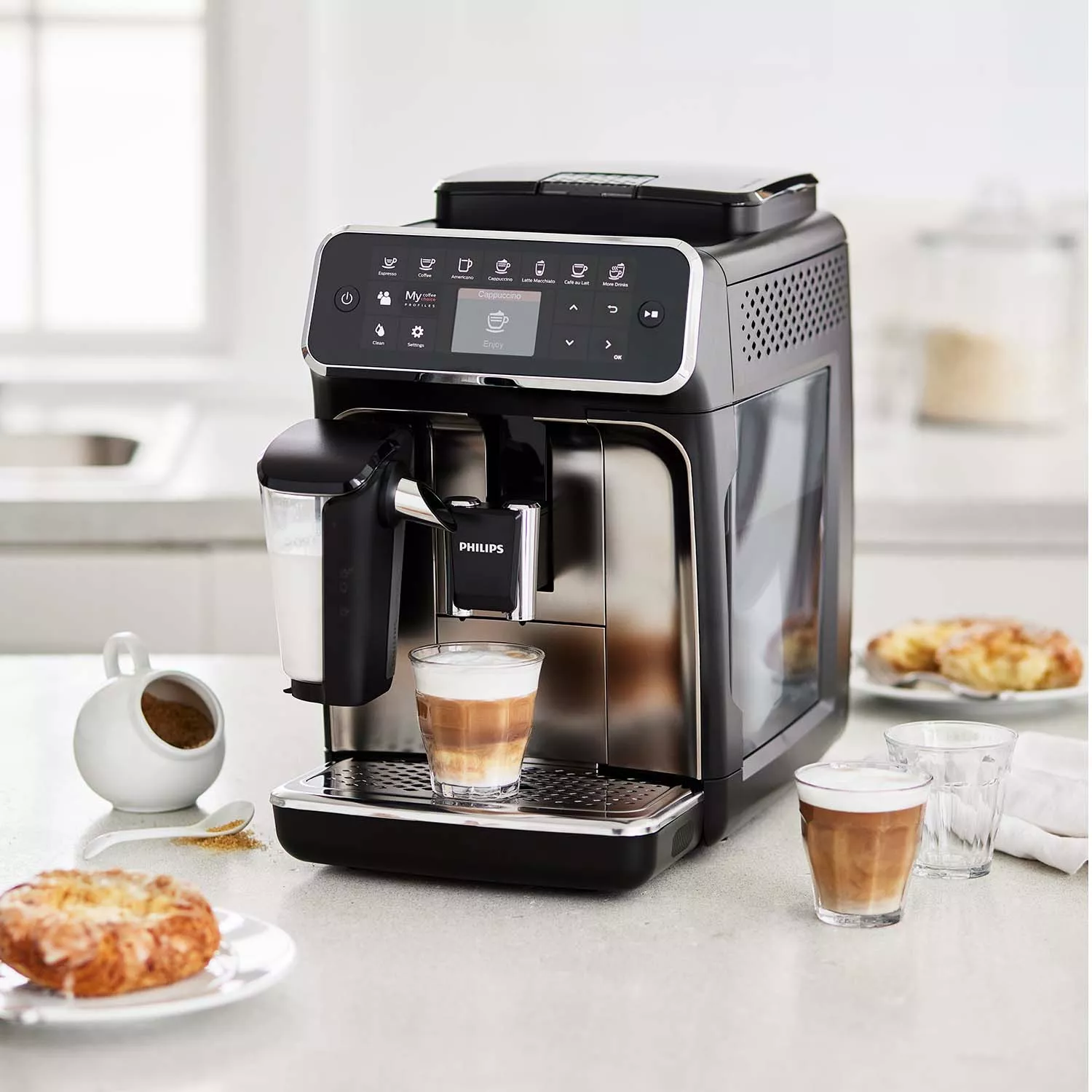
Maintenance Made Easy
When it comes to user experience, the Philips 3200 truly shines. I appreciate that it’s designed for both novice and experienced coffee makers. Its straightforward controls make it easy to brew a delicious cup of coffee with minimal effort.
Maintenance is another critical factor for me, and the 3200 excels here. The removable brew group is a game changer for cleaning, and the automatic cleaning functions ensure that I spend less time on upkeep and more time enjoying my coffee. I can easily rinse the brew group under water, and with the automatic descaling feature, I don’t have to worry about scale buildup affecting performance.
Community Feedback and User Reviews
As I looked into the experiences of other users, I found that many share my sentiments about the Philips 3200. Online reviews often highlight its reliability and the quality of coffee produced. Many users mention that they appreciate the ability to make both coffee and milk-based drinks with ease, much like I do.
Several reviews also mention how the machine holds up well over time, with minimal issues. This is reassuring for anyone considering an investment in an espresso machine, as durability is a key factor.
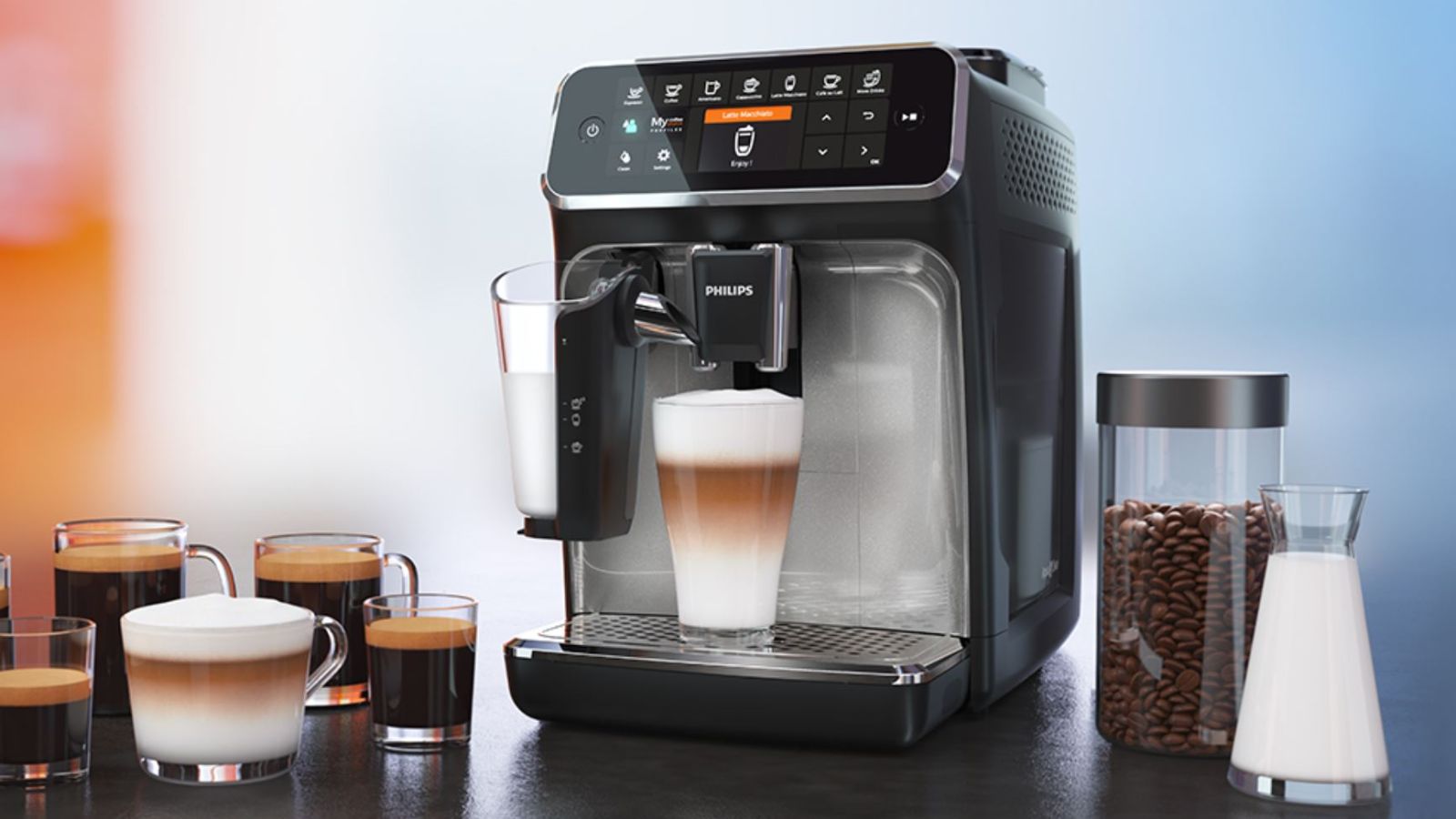
Product Review Conclusion: Philips 3200 vs 4300 vs 5400
In conclusion, my exploration of the Philips 3200 vs 4300 vs 5400 has led me to firmly believe that the Philips 3200 is the best option among the three. While the 4300 and 5400 offer appealing features, they do not significantly enhance the core coffee experience that the 3200 provides.
The 3200 delivers exceptional flavor, ease of use, and convenient maintenance, making it an ideal choice for anyone who wants to enjoy high-quality coffee at home without unnecessary complications. If you’re considering an espresso machine that balances performance and value, the Philips 3200 is undoubtedly worth the investment.
By choosing the 3200, you’re opting for a reliable machine that adapts well to your lifestyle, whether you’re brewing a quick cup in the morning or hosting friends for an afternoon coffee session. My experience has shown that it truly enhances the joy of coffee making, and I can’t recommend it enough for those looking to elevate their coffee game.
Frequently Asked Questions about the Philips 3200, 4300, and 5400
Q: What are the main differences between the Philips 3200, 4300, and 5400?
A: The Philips 3200 is an entry-level model with essential features, including an intuitive touchscreen, built-in milk frother, and easy maintenance. The 4300 offers an upgraded milk frothing system and larger water and bean containers. The 5400 is the premium option with personalized drink settings, LatteDuo technology for making two milk-based drinks simultaneously, and a wider selection of coffee options.
Q: Which model is best for beginners?
A: The Philips 3200 is ideal for beginners due to its straightforward operation, user-friendly touchscreen, and reliable performance. It allows new users to create a variety of coffee drinks without a steep learning curve.
Q: How easy is it to clean the Philips espresso machines?
A: All three models, especially the Philips 3200, feature a removable brew group and automatic cleaning functions that simplify maintenance. Regular rinsing of the brew group and periodic descaling are recommended, but overall, these machines are designed for easy upkeep.
Q: Can I use pre-ground coffee with these machines?
A: Yes, all three models allow for the use of pre-ground coffee in addition to whole beans. There is a dedicated compartment for pre-ground coffee, which is useful for those who want to experiment with different blends or avoid using the grinder.
Q: How do the milk frothers compare in each model?
A: The Philips 3200 has a basic milk frother that produces creamy milk for lattes and cappuccinos. The 4300 features an upgraded frother for better control over milk texture and temperature. The 5400 boasts the most advanced frothing system, including the ability to prepare two drinks simultaneously.
Q: What is the warranty period for these machines?
A: Philips typically offers a two-year warranty on their espresso machines, which covers defects in materials and workmanship. It’s always advisable to check the warranty specifics at the time of purchase.
Q: Is it possible to customize the strength and temperature of the coffee?
A: Yes, both the Philips 4300 and 5400 allow for customization of coffee strength and temperature. The 3200 offers a simpler range of options, but it still provides some level of customization for a personalized coffee experience.
Q: How much counter space do these machines require?
A: The dimensions of each model are relatively compact, with the 3200 and 4300 being quite similar in size. The 5400 is slightly larger due to its added features. Ensure to check the specific measurements, but all three models are designed to fit comfortably on most kitchen countertops.
Q: Can these machines handle different coffee bean types?
A: Yes, the Philips espresso machines can accommodate various coffee bean types, including medium and dark roasts. They are designed to extract flavors from different beans effectively, allowing you to enjoy a wide range of coffee experiences.
Q: Are these machines suitable for making other types of beverages besides coffee?
A: While these machines are primarily designed for coffee and espresso drinks, the milk frothing capability allows users to create a variety of beverages, such as hot chocolate or steamed milk drinks. However, they are not specifically designed for other non-coffee beverages.
